Black CTC
Black CTC is oxidized tea manufactured through cutting, tearing and curling machine. Grading is through separation of particle sizes using various meshes. Processing of CTC black tea involves 7 stages namely; Green leaf reception, withering, maceration, cutting, tearing & curling, oxidation, drying, sorting, and packing.
BLACK CTC MANUFACTURING PROCESS
Step 1: Greenleaf Reception
At the green leaf reception, the leaf is offloaded from the vehicles, quality of the leaf is assessed and weighed with appropriate records updated. The leaf is then transferred to assorted troughs on a monorail and spread for withering process to begin. On an average, 480-1200kgs are loaded per trough. This is largely determined by expected crop, weather condition or quantity of green leaf supply.
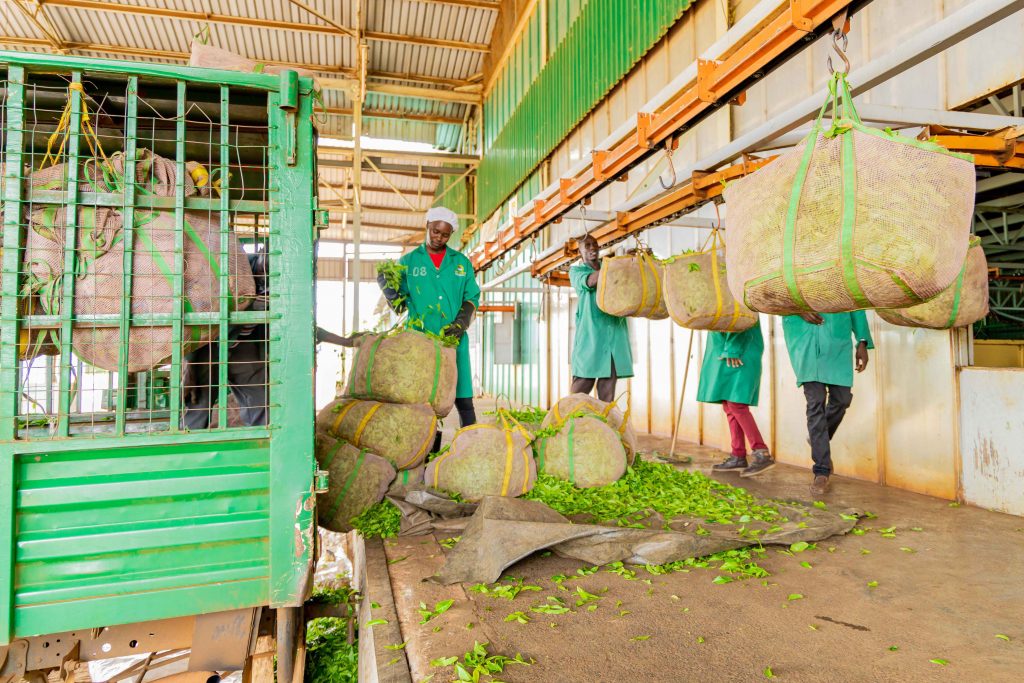
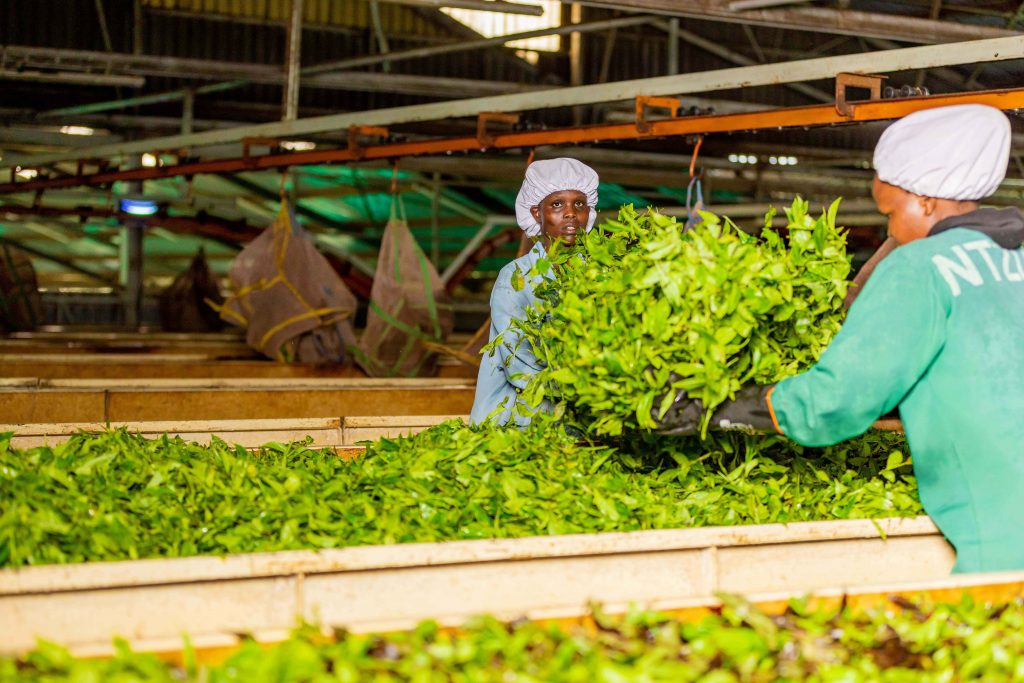
Step 2: Withering
Withering is the process in which freshly plucked green leaf is conditioned physically and chemically for subsequent processing stages. Particularly, withering is one of the most important tea processing steps and constitutes the foundation for achieving quality in tea manufacturing.Physical withering reduces the moisture content of fresh leaf from 80%-90% to ideal moisture content of 65%-67% and makes the leaf flaccid or rubbery. The reduction in moisture content is achieved by blowing dry air through the troughs while monitoring the process every hour until the required moisture content is achieved.On the other hand, chemical withering initiates chemical changes after plucking which includes; breakdown of complex compounds into simpler compounds. These two components remain essential for the subsequent steps in Black CTC manufacturing.
Step 3: Maceration, Cutting, Tearing and Curling of Tea Leaves
During this process, the tea is crushed, torn and curled to produce appropriate feedstock for black tea that aids the brewing process. Consequently, the cutting and maceration of the leaf helps to produce a fine mash or “dhool”. Through the process, the cell integrity is disrupted facilitating the mixing of the polyphenols held in the cell vacuole with cytoplasmic enzyme, polyphenol oxidase which are exposed to atmospheric oxygen for further development. Popularly referred as fermentation although it’s an oxidation process.
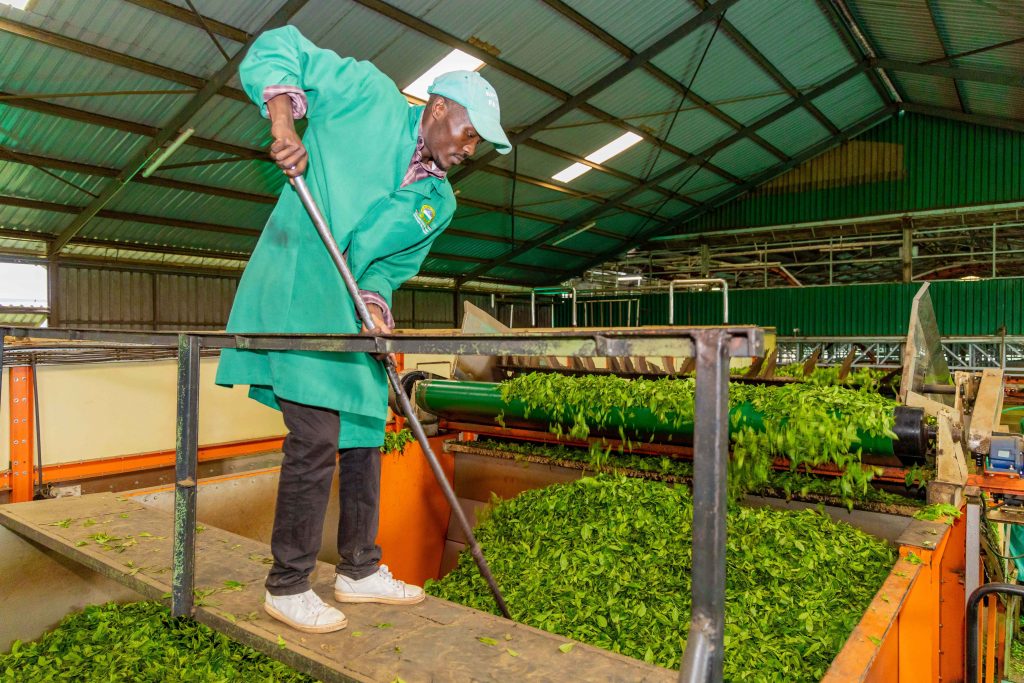
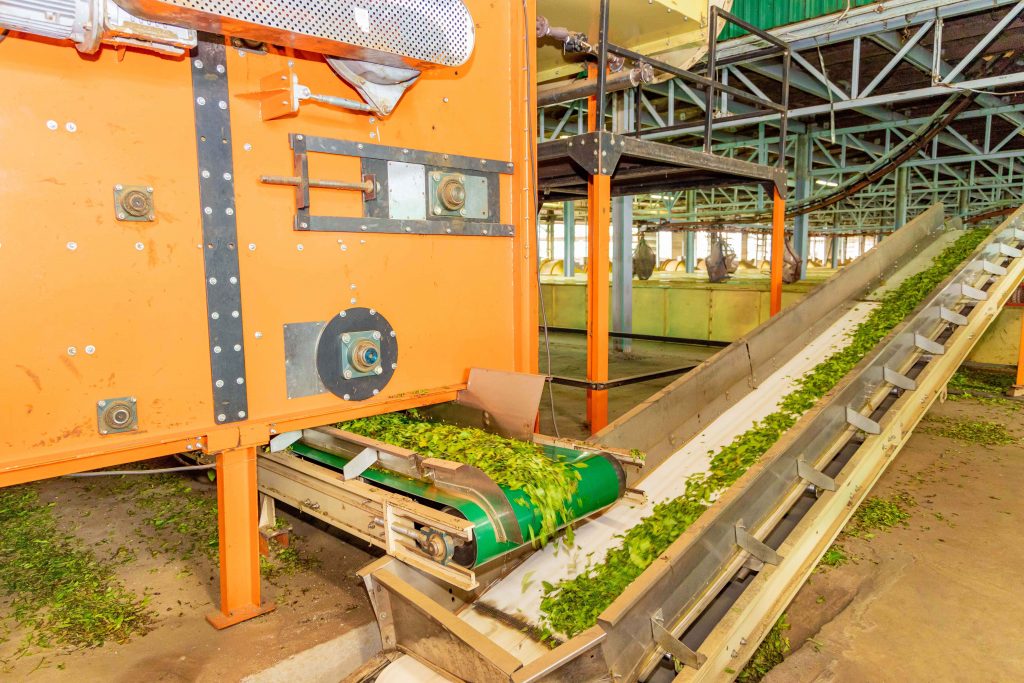
Step 4: Oxidation/Fermentation of Dhool
The macerated leaves are then transferred into the Continuous Fermenting Unit (CFU) for oxidation.
During this important stage, the Polyphenols in the tea leaf are oxidized in presence of the enzymes and subsequently condensed to form colored compounds contributing to the quality attributes of tea. Fermentation starts immediately after cell rupture for upto 85 -95 minute with regular Dhool temperature and relative humidity monitoring and control. The characteristic coppery color and fermented tea aroma judge the completion of fermenting.
Step 5: Drying
The fermented tea is then fed to the dryer via a conveyor. This is the process that stops fermentation and introduces a stable product of low moisture content of 3.0 to 3.3% that can be shipped and stored.
The main objectives of drying is to arrest enzymic reaction (oxidation), to remove moisture from the leaf particles, to destroy all microorganisms while reducing them to acceptable levels to produce a stable product with good preservation quality.
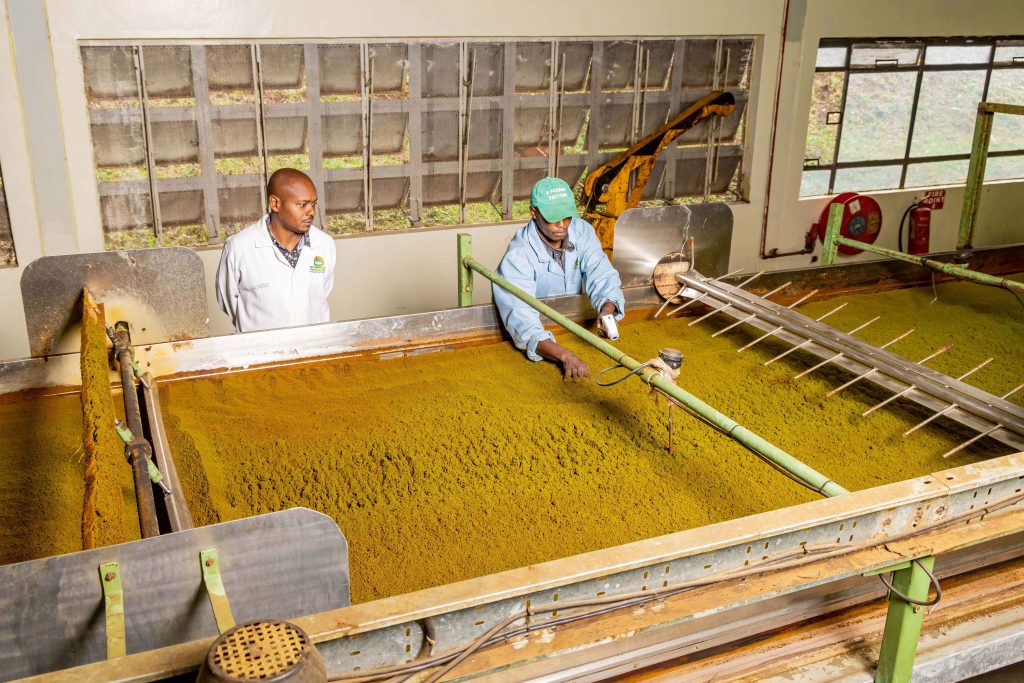
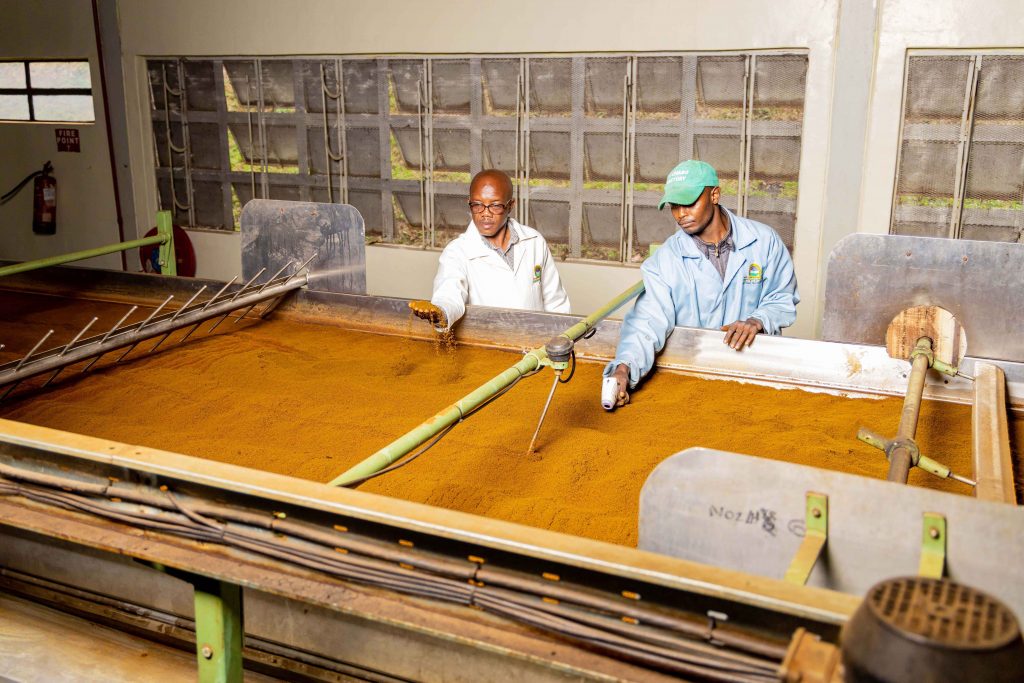
Step 6: Sorting and Grading of Black Tea
Sorting is the operation in which bulk tea particles are separated into various grades of different sizes to conform with tea trade requirements. The sorting process aims at, (i) enhancing the product value (ii) to impart quality. Grading is therefore undertaken to improve the product marketability and to obtain a premium price from both the local and international markets. Cleaning of fibre is also part of the sorting procedure which is directly related to value addition.
The dry tea is then exposed to static electricity-charged PVC rollers that pick up the fibres and the open leaf. After drying, the teas are then sorted into the four primary grades based on size and fibre i.e. BP1 (broken pekoe), PF1 (pekoe fanning’s one), PD (pekoe dust), D1 (dust one), and three secondary grades i.e. F1 (fanning’s) Dust and BMF (broken mixed fanning’s).
Step 6: Quality Control
Black tea quality verification is done at the quality control level. This involves sampling of the drier mouth and the primary grade teas which are infused for tasting. The taster then evaluates the tea samples for quality and manufacturing faults through visual inspection, nosing and tasting. While recording his evaluation and findings. The main purpose of tasting is to ensure continuous production of high-quality tea by detecting any faults in processing in a bid to take timely remedial action.


Step 6: Packaging & Dispatch
Packing is the process where the sorted and graded bulk tea is placed in poly bags and paper sacks according to grades in line with trade requirements and regulations. Once enough teas have been accumulated they are packaged according to grades weighing different sizes.
